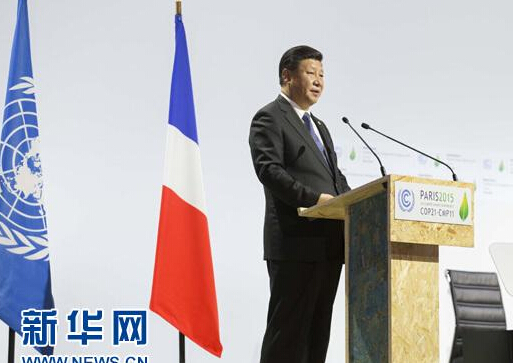Assessing policies vital for green growth
- By Fong Wee Kean
 0 Comment(s)
0 Comment(s) Print
Print E-mail China Daily, December 22, 2015
E-mail China Daily, December 22, 2015
|
|
|
President Xi Jinping attended the opening of Paris Climate Change Conference and delivered and important speech on Nov. 30,2015. [Photo/Xinhua] |
The historic agreement passed at the Paris climate change conference compels all countries for the first time to reduce greenhouse gas (GHG) emissions that cause global warming. In particular, the agreement aims to keep global average temperature rise to below 2 degrees Celsius above pre-industrial levels on the basis of equity and common but differentiated responsibilities of countries and their respective capabilities.
Conveying the global leaders' unanimous determination to take climate action, the Paris deal also established the mechanism, framework and architecture for enhanced actions before and after 2020. Retroactive scientific evaluation will be routinely conducted to review the Intended Nationally Determined Contributions of all the parties to the United Nations Framework Convention on Climate Change.
As one of the world's largest GHG emitters, China actively engaged in a slew of bilateral and multilateral climate negotiations before and during the Paris climate conference. Its extensive diplomatic efforts include the two China-US joint statements on climate change, in November 2014 and September 2015, as well as the China-France statement on climate change issued earlier last month. And three months ago, it announced the establishment of an independent South-South cooperation fund of 20 billion yuan ($3.1 billion) to help developing countries fight and adapt to climate change.
At the Paris climate conference, President Xi Jinping pledged to launch cooperation projects next year to set up 10 pilot low-carbon industrial parks, start 100 mitigation and adaptation programs in other developing countries, and offer training opportunities to 1,000 of their representatives.
He also reiterated that China's INDC, submitted to the UN in June, aims to cut its carbon emissions per unit of GDP by 60 to 65 percent from the 2005 level by 2030, and increase the mix of non-fossil fuel sources in its primary energy consumption to about 20 percent and peak its carbon emissions also by 2030.







Go to Forum >>0 Comment(s)